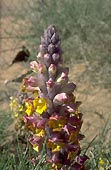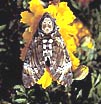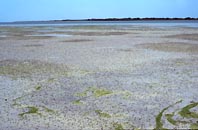  Umm al-Qaiwain is one of the so-called Northern Emirates. It features a largely undeveloped coastline with dense mature mangrove backing the barrier island of Sinaiya, which further protects an extensive intertidal zone recognised as being of international importance to migratory waterfowl. The ridged sandy island houses the UAE's largest colony of Socotra cormorant (Phalacrocorax nigrogularis). An aerial shot shows the birds densely packed in the colony of some 15,000 pairs during their winter breeding season. Umm al-Qaiwain is one of the so-called Northern Emirates. It features a largely undeveloped coastline with dense mature mangrove backing the barrier island of Sinaiya, which further protects an extensive intertidal zone recognised as being of international importance to migratory waterfowl. The ridged sandy island houses the UAE's largest colony of Socotra cormorant (Phalacrocorax nigrogularis). An aerial shot shows the birds densely packed in the colony of some 15,000 pairs during their winter breeding season.
In the lee of Sinaiya island, the intertidal flats are a vital feeding area for migrant waders, gulls and terns, with at least six species, including crab plover (Dromas ardeola) and lesser sand plover (Charadrius mongolus) occurring in internationally important numbers. Invertebrate prey density is particularly high, and varied, thus permitting many different species of wader to stopover and refuel or to overwinter. Along the desert shoreline, the parasitic desert hyacinth (Cistanche tubulosa) is a common sight.
 The irrigated fodder fields of Hamraniya contain mature ghaf (Prosopis cineraria) of a size not commonly found elsewhere in the UAE. The irrigated fodder fields of Hamraniya contain mature ghaf (Prosopis cineraria) of a size not commonly found elsewhere in the UAE. Undersown with grass, the parkland landscape is manmade but represents a particularly unusual agricultural habitat. Wildlife abounds, particularly at night. The sizeable convolvulous hawkmoth (Acherontia styx). The latter is able to emit a squeak when handled or disturbed, by forcing air out of the spiracles on the abdomen, presumably as a defense mechanism. Undersown with grass, the parkland landscape is manmade but represents a particularly unusual agricultural habitat. Wildlife abounds, particularly at night. The sizeable convolvulous hawkmoth (Acherontia styx). The latter is able to emit a squeak when handled or disturbed, by forcing air out of the spiracles on the abdomen, presumably as a defense mechanism.
|